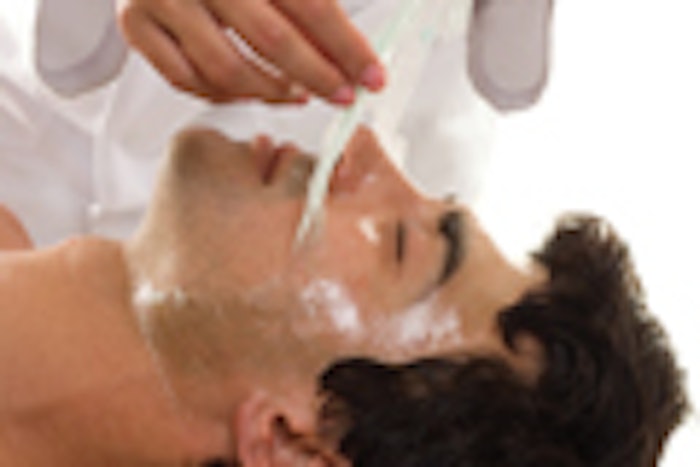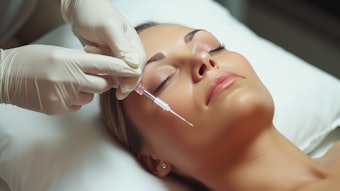
Citing preventive treatments, hybrid spas and stillness as being some of the up-and-coming trends for the year, SpaFinder has released its annual spa industry predictions report for 2010.
SpaFinder, Inc. revealed its 2010 Spa Trends Forecast, naming global spa trends that will influence spa experiences for both consumers and the industry in 2010 and for years to come.
SpaFinder’s annual report is based on analysis from a team of experts who visit thousands of spas, interviews with top industry analysts and research organizations, and ongoing consumer and industry research in the spa, travel, wellness and beauty sectors. As the point of connection between 9,000-plus spas and salons around the world and millions of spa consumers, the company is credited for having a unique perspective on a complex and growing industry.
Top 10 global spa trends to watch in 2010
1) The new “P” word. Goodbye, pampering. Hello, prevention. Well, not so fast. It's more like, move over, pampering; hello, prevention. Against the backdrop of a global health care crisis, prevention is poised to be the new “it” word of the spa industry in 2010 and beyond. But rather than replacing established industry concepts like pampering and wellness, it’s a sharp—and smart—refocusing of the conversation. Pampering, after all, speaks to the stress-reduction, relaxation goal of most spa-goers, and that in itself is preventive.
2) Year of the hammam. With spa-goers increasingly seeking authenticity, tradition, and that magical spa experience that also offers true results, the Middle Eastern hammam (hamam in Turkey) represents one of the hottest trends for 2010, albeit with a distinctly modern expression. This is the year in which people who have never heard the term hammam will learn its meaning, and those already familiar with it will discover new places to experience it.
3) Not going to, but belonging to a spa. No longer a place where you infrequently go for the occasional treatment, spas are being creatively re-imagined as places of belonging—not only through the big rise in membership programs, but also in the diverse ways spas are being recast as social or communal hubs, contributing the additional, although unspoken, benefit of emotional health.
4) The online spa. 2010 will be a watershed year for the spa industry’s virtual presence. Consumers are already online searching for spas, booking treatments, joining online weight loss and coaching groups, and embracing social networking sites, such as Facebook and Twitter. Some even play the online Sally Spa game. But there’s more to come. Get ready for gaming while you exercise, for having health information like your blood pressure and heart rate automatically uploaded for access online by your spa or doctor, and for spas to use yield management software that—much like the airlines—enables price variation, so spas can offer a less expensive massage on weekday mornings, compared to Saturday afternoons. And in early 2010, you’ll be able to stroll down any street in the United States and check your iPhone to pinpoint the spa nearest you, thanks to the upcoming SpaFinder app.
5) The hybrid spa. The modern spa is increasingly a hyphenated affair, with spas incorporating far more fitness, fitness centers incorporating more spa, hospitals incorporating spa elements, and spas bringing in more medical doctors and specialists. The era of the spa/fitness/integrated-health-center/hospital/spiritual-retreat/wellness-center/beauty-clinic is on a serious upswing. It’s one integrated human body, after all, and the “pure” spa is on the decline, while the hybrid spa is busy inventing new you-name-it plugged-in hybrid models.
6) The price is (still) right. 2009’s headline spa story was the industry’s aggressive response to the global recession and the near-universal focus on deals, deals and more deals. While there’s cautious consensus that the economy is in recovery mode, there’s great news for consumers in 2010: The spa bargains will continue apace, not only straight discounting, but also more innovative incentives smartly designed by spas to drive incremental revenue and retain loyal customers. And keep an eye out for savvy new spas combining less expensive treatments and facilities with a touch of glamour, hitting a sweet spot between nice and price.
7) Wellness tourism wows. We’re familiar with people seeking spas for wellness and also with medical tourism, crossing borders for medical procedures such as plastic surgery, dentistry, knee replacements and so on. Well, make room for wellness tourism, a new term describing travel across borders for preventive services, diagnostics, spa and well-being vacations, even stem cell banking. The concept not only dramatically broadens the appeal of the medical tourism model, which has suffered from its narrow association with plastic surgery, it’s increasingly poised to become the way we define our time away from home and work in the future.
8) Scary and silly spa stories drive evidence, science and standards. The fallout from heavily publicized spa horror stories and the recession-driven consumer insistence on no-gimmick treatments with real, measurable benefits will quicken a rising industry trend: the demand for evidence-based therapies, stricter industry standards, and greater transparency/resources to help spa-goers separate the wheat from the chaff. As spas move into the health and wellness sectors, facts, evidence and science that support industry approaches will move front and center, even at the cost of a few diamond facials.
9) Diversity at a tipping point. For years analysts have discussed how the spa industry has been attracting new demographics such as men, teens, seniors and new ethnic groups. But in 2010 diversity has reached a tipping point: It has fully arrived, and it’s here to stay. Spa-going has become so mainstream that the face of the spa-goer will now continue to reflect the wider global population. Every spa region has its unique diversity story, and around the globe far more men, younger and older generations, and ethnic groups are hitting the spa. And spas are taking note, with offerings that cater to these diverse groups’ needs and wants. Set to explode: In the U.S. alone, where approximately 78 million baby boomers are poised to enter their 60s, watch for silver spa-ing to really take off.
10) Stillness. The modern human experience is an unprecedented amount of sensory overload, noise and media stimulation. We’re wired to the gills, spending nearly all waking hours in front of TV and computer screens—bombarded, texting, tweeting, clattering away, now even on airplanes. With the spa as one of the last remaining sanctuaries of silence and serenity, look for the industry to put a new emphasis on stillness, on slowness and on silence. From totally silent massages/treatments or using white noise and subtle nature sounds instead of music; to silent walks, hikes, and dinners at Red Mountain or Rancho La Puerta; to Six Senses Spas’ focus on a Slow Life approach; to an upswing in meditation offerings and programs, spas will help clients move from busy-ness and overload to quiet, to stillness. Sounds awfully good.
Bonus trend: Celebrating celebration. In a recent survey, travel agents reported the No. 1 emerging spa travel trend was people increasingly hitting stay spas for special occasions like big birthdays, anniversaries, weddings, retirement parties and so on. And after the severe downturn in spas' corporate/meetings business, which, because of virtual conferencing, will continue to decline, the industry is aggressively incentivizing group celebration travel to revitalize lost business. This concept was born at the day spa, with its long tradition of bachelorette, graduation and “girlfriend” parties, and its rapid migration into the travel arena in 2010 is one great reason for the industry to celebrate.










